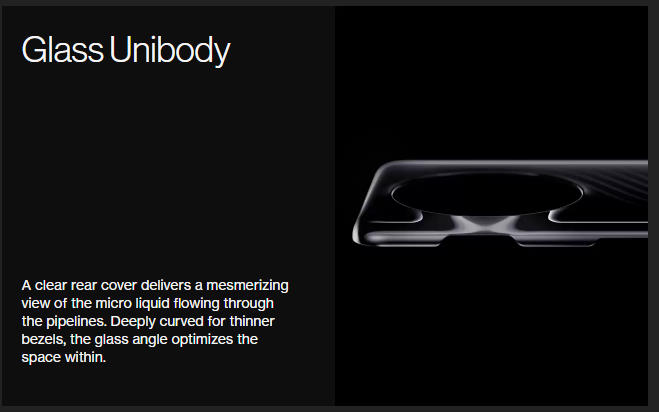
OnePlus
It’s Mobile World Congress this week, which means entering the wild world of concept phones. Usually, these are flexible display devices that will never see the light of day, but this year OnePlus has the “OnePlus 11 Concept” phone. This has a liquid cooling system called “Active CryoFlux.” We will try to decipher this thing, but our first blazing red flag is that OnePlus does not go into much detail.
It’s worth noting that OnePlus has made several concept phones, which have never really affected the company’s consumer products. One phone put electrochromic glass in front of the camera lenses, rendering them invisible when they weren’t being used. Another phone would change colors. Neither feature ever made it into a consumer phone.
OnePlus’ press release says the system features “a piezoelectric ceramic micropump at its core, connected to pipelines sandwiched between an upper and lower diaphragm. The micropump takes up an area less than 0.2 cm², enabling cooling liquid to circulate around the pipelines without significantly increasing OnePlus 11 Concept’s weight and thickness.”
-
If this screenshot from the marketing video isn’t purely fabricated, there is a thin cooling sticker with some liquid in it that gets slapped to the back of the phone and sandwiched under the glass.
OnePlus -
The blue liquid supposedly goes into and around the camera bump, but it’s not necessarily cooling anything.
-
This is OnePlus’ picture of the “micropump.” I assume it’s connected to the blue piping, but OnePlus’ pictures don’t make that clear.
Those fancy blue lights on the back seem to be the cooling system and aren’t just there for looks. The press release says, “The clear back delivers a mesmerizing view of the Active CryoFlux pipelines at work,” which also happen to be lit up. OnePlus also says, “Active CryoFlux liquid flows around the camera like a halo,” so everything blue is cooling liquid, according to OnePlus.
As for the actual results of this system, OnePlus says, “In laboratory tests, Active CryoFlux has been shown to bring down a phone’s temperature during gaming by up to 2.1°C, improving a game’s frame rate by 3-4 degrees, or by 1.6°C during charging, shaving 30-45 [seconds] from the charging time.” Those numbers are not particularly impressive. Phones throttle pretty quickly due to heat, and mostly deal with “cooling” by going slower. OnePlus’ press release quote uniquely measures frame rate in “degrees”—I’m pretty sure they mean “frames”—and 3-4 frames is often the margin of error in a benchmark. Phones are very heat constrained and usually deal with their passive cooling solutions by slowing down so they don’t overheat. Adequate cooling would make a phone a lot faster, especially for prolonged use, like gaming.
The liquid does not seem to go anywhere, which would explain why OnePlus’ cooling results are so meager. Water cooling in PCs works by attaching a water block to a hot thing, like your CPU or GPU, heating that liquid, and then moving it to something that will cool it down, usually a radiator with some fans behind it. Is that actual cooling loop replicated here? The phone has no discernible way to cool the liquid off once it heats other than just passive cooling. There’s no fan, as we’ve seen on some phones, and no radiator or other cooling apparatus.
It seems like there’s a small amount of equal-temperature liquid just sloshing around in there, and OnePlus hopes it will dissipate heat as it moves across the back of the phone. It probably doesn’t help that the cooling system is sandwiched inside the phone by a glass panel, which is an insulator. OnePlus also doesn’t explicitly say that the liquid cooling is meaningfully connected to the SoC via a water block. It’s not clear what components it is cooling.

A “glass unibody” cannot possibly be correct. You can see the picture there and that’s a mostly normal glass phone back.
OnePlus
Finally, some marketer decided to describe the phone’s design with “Glass Unibody,” which sounds like an absolute nightmare concept for phone durability. There seems to be nothing to this claim other than marketing: There’s still a metal frame around the phone, and OnePlus’ picture of the “unibody” just seems to be a normal rear glass panel. An actual “unibody” would involve the back and frame of the phone being made out of a single piece, with the individual electronics mounting to that piece inside the phone. Thankfully OnePlus did not employ a very skilled glass blower or anything, and there doesn’t seem to be much more glass here than in a normal OnePlus 11.







